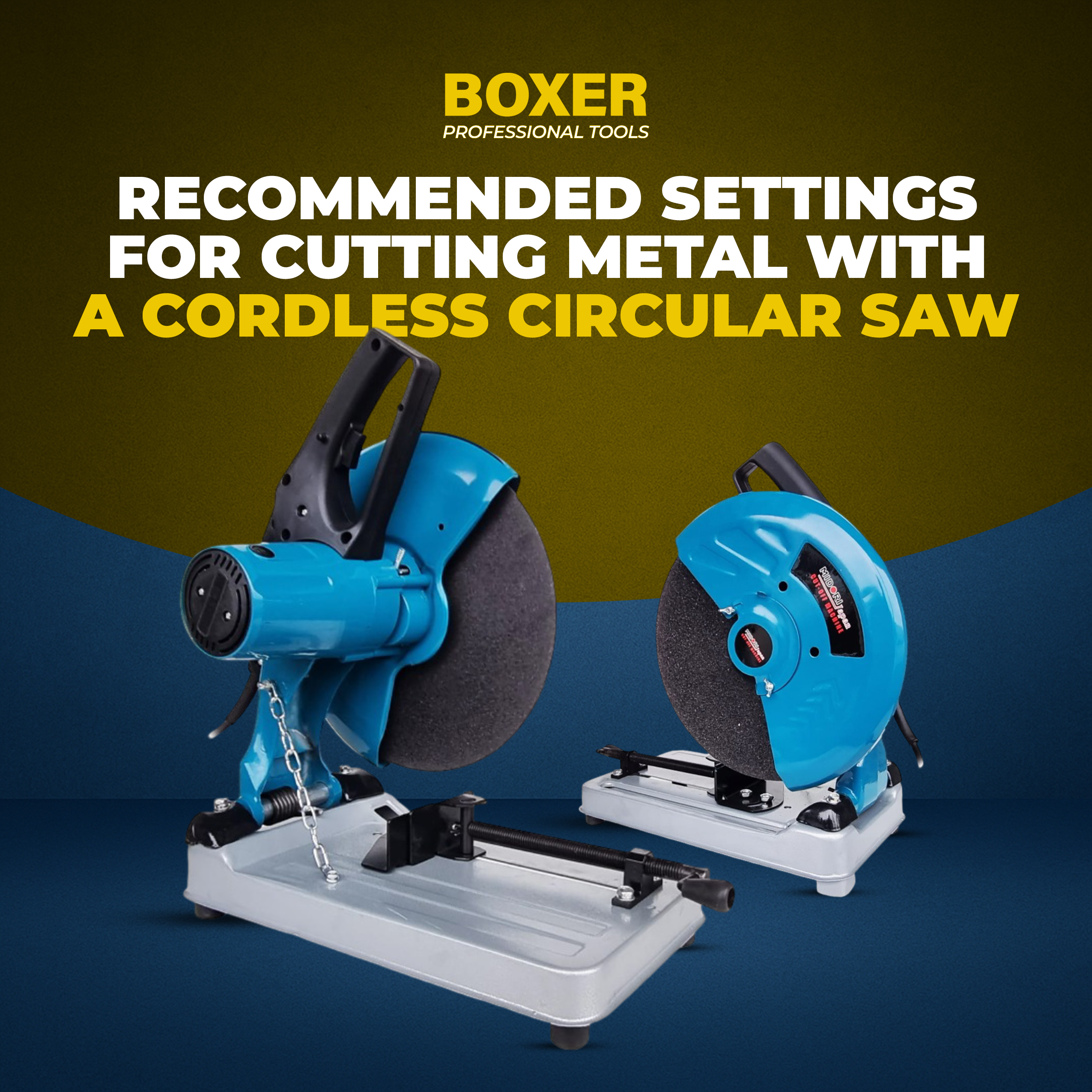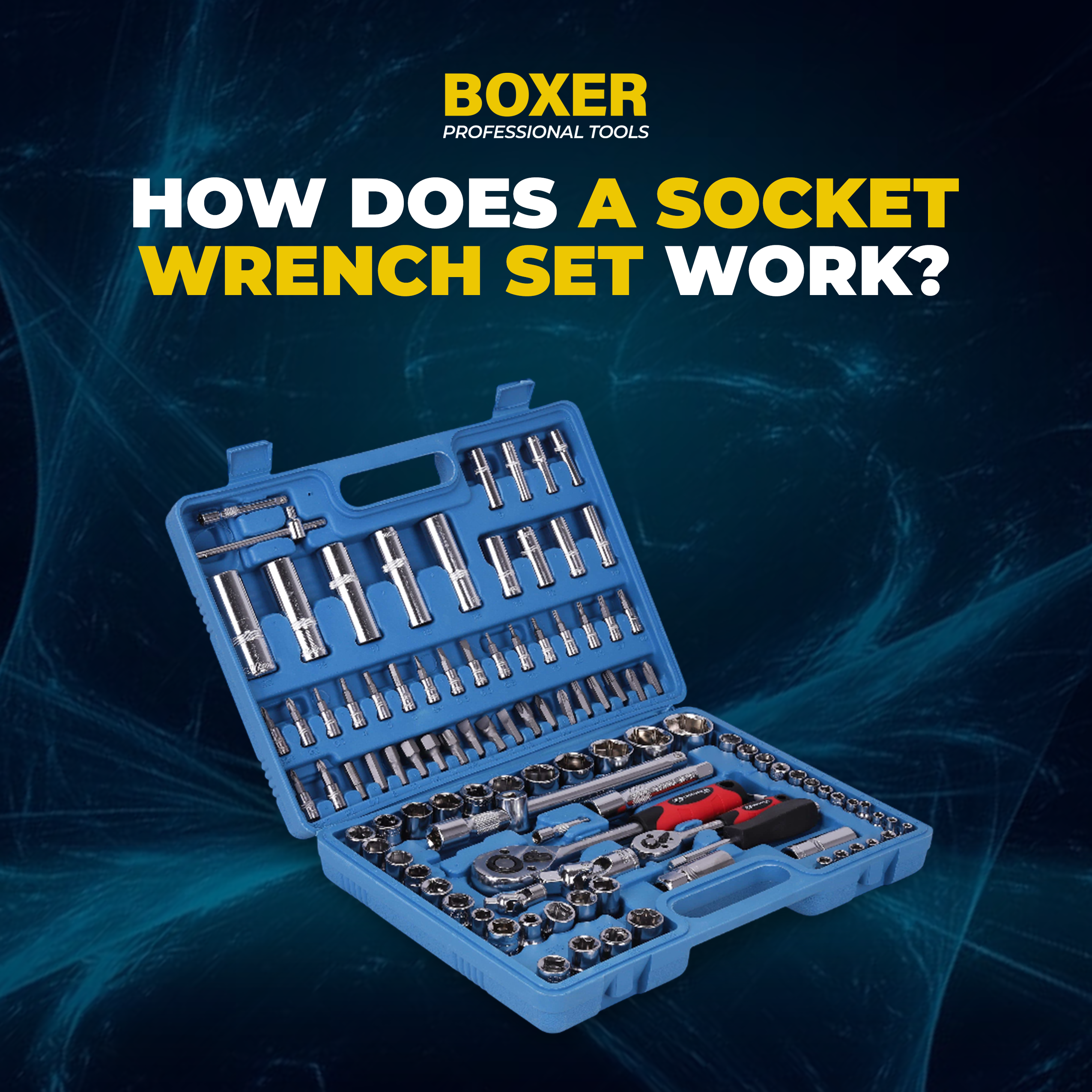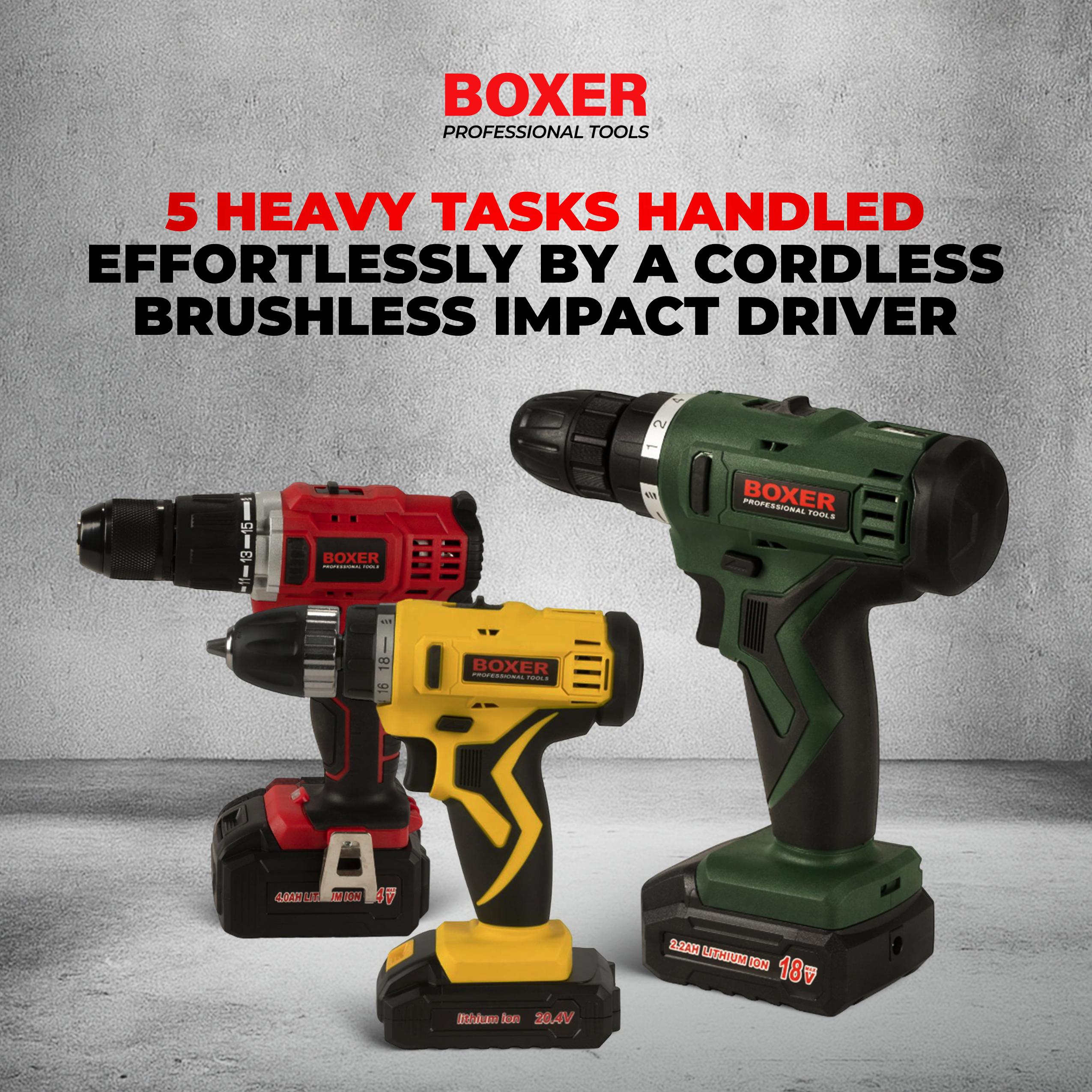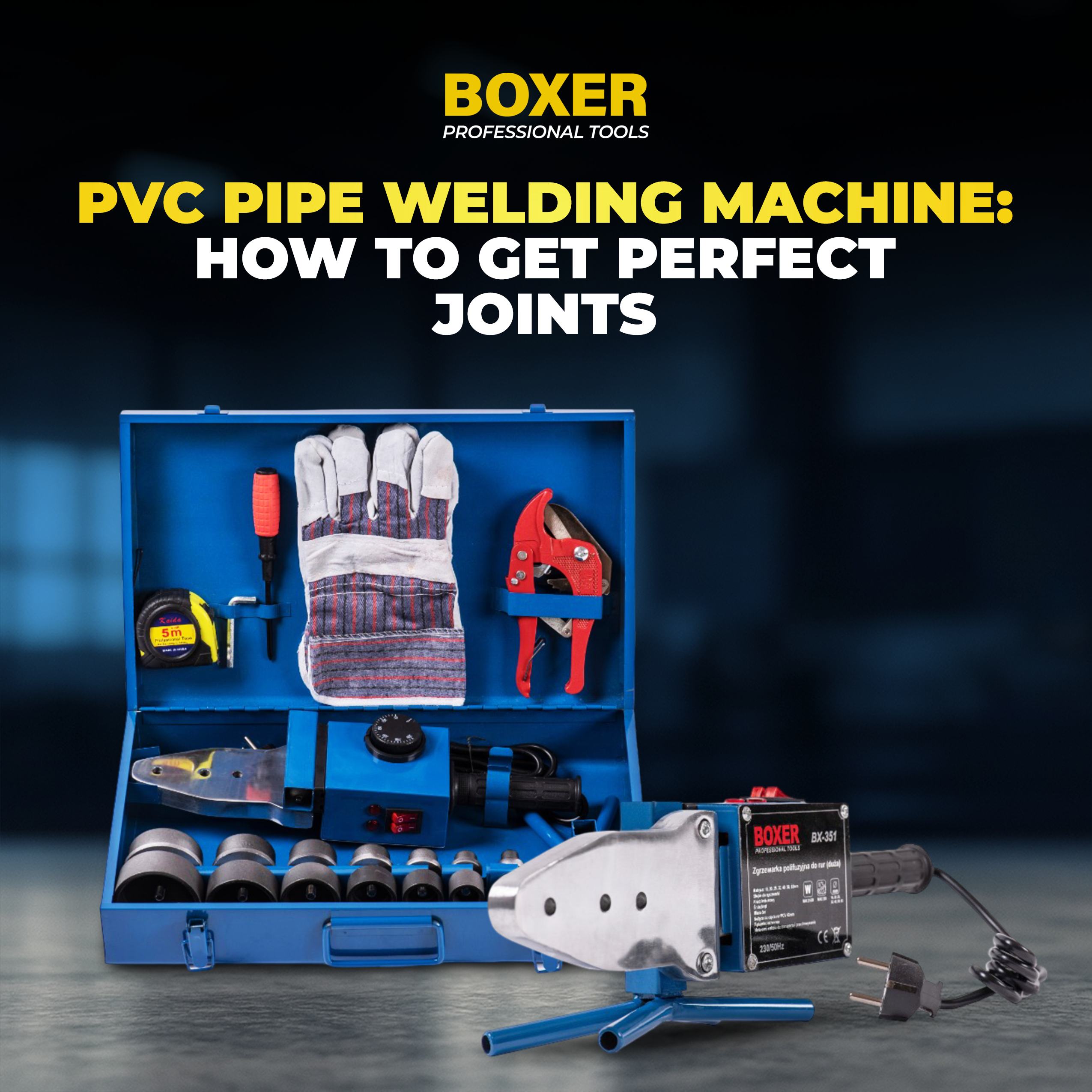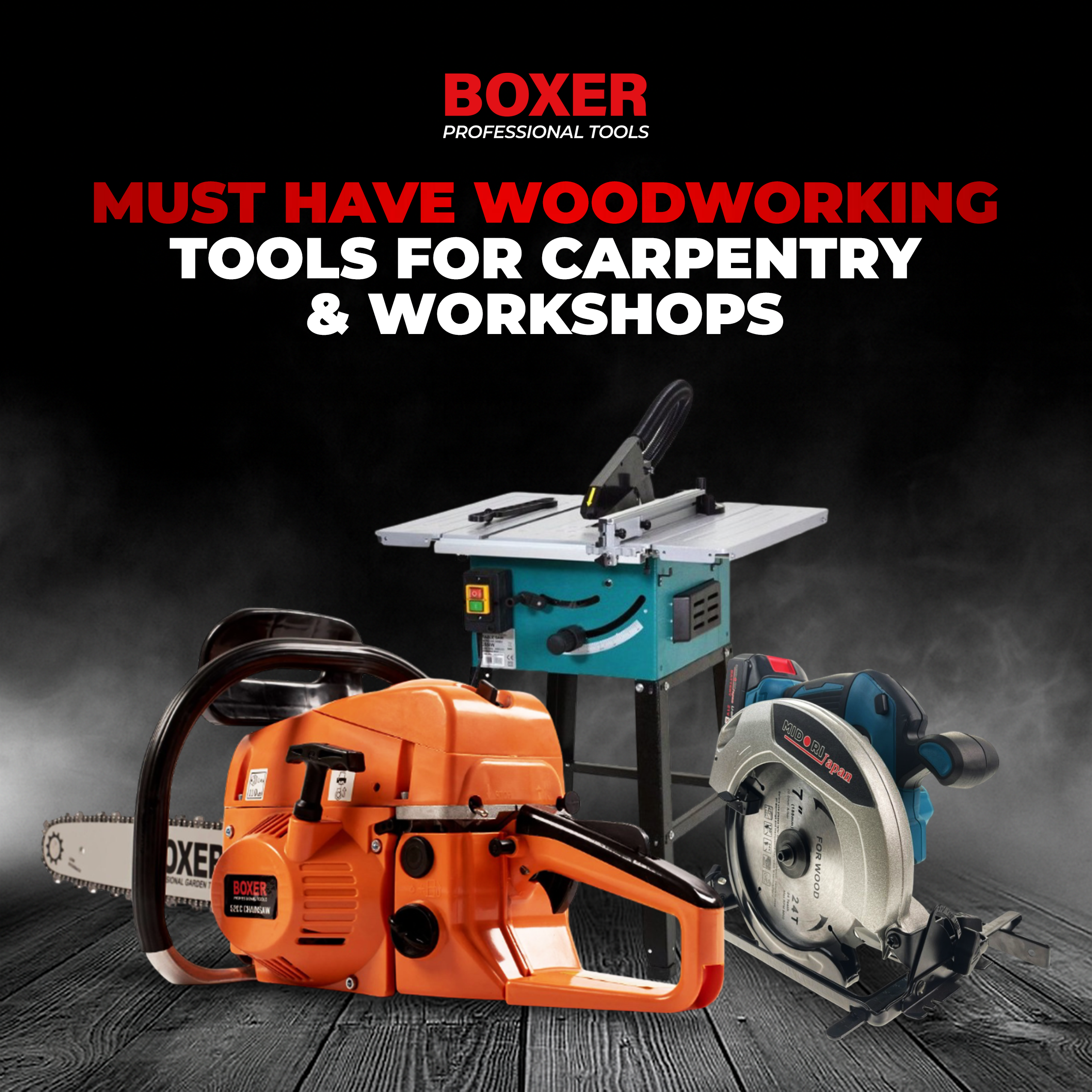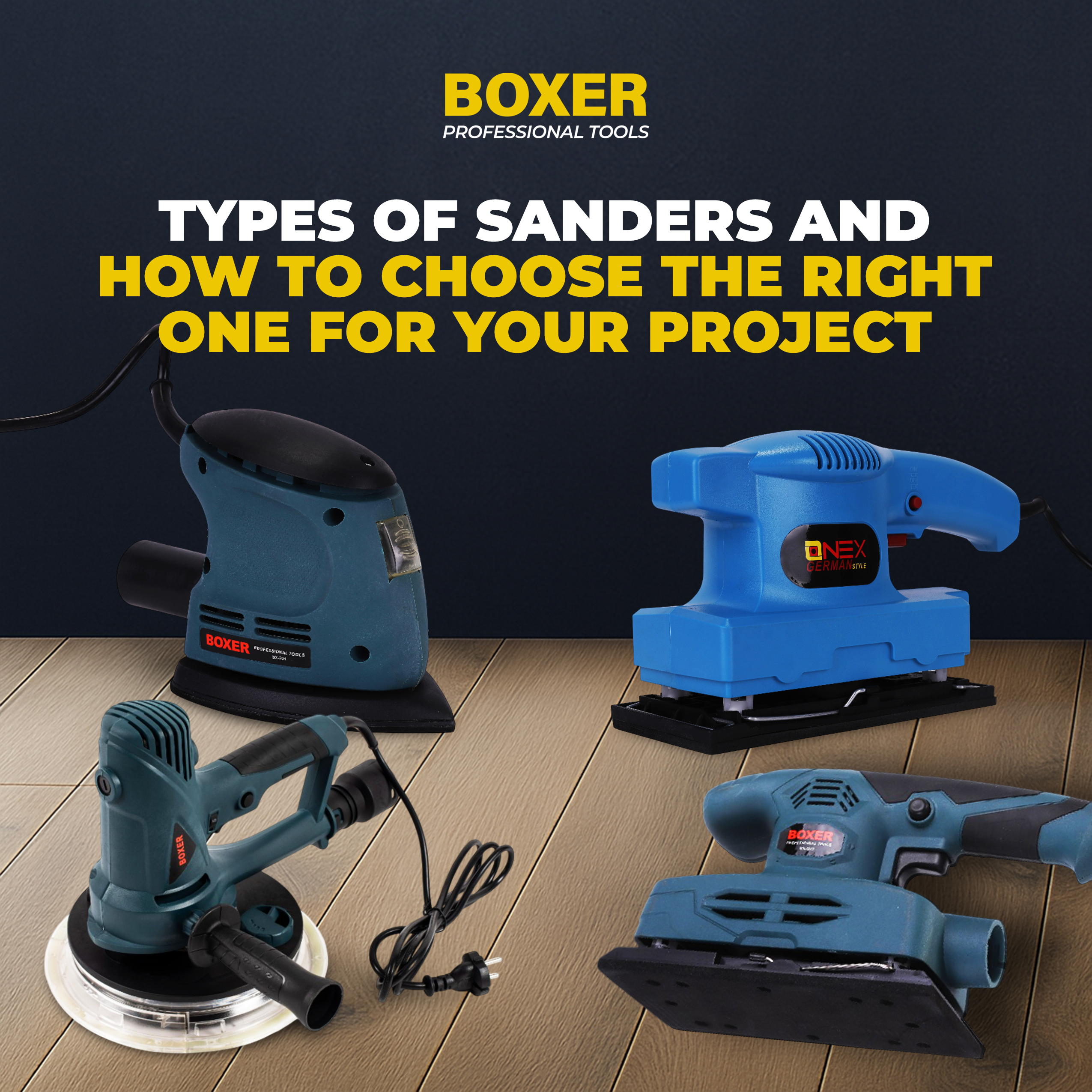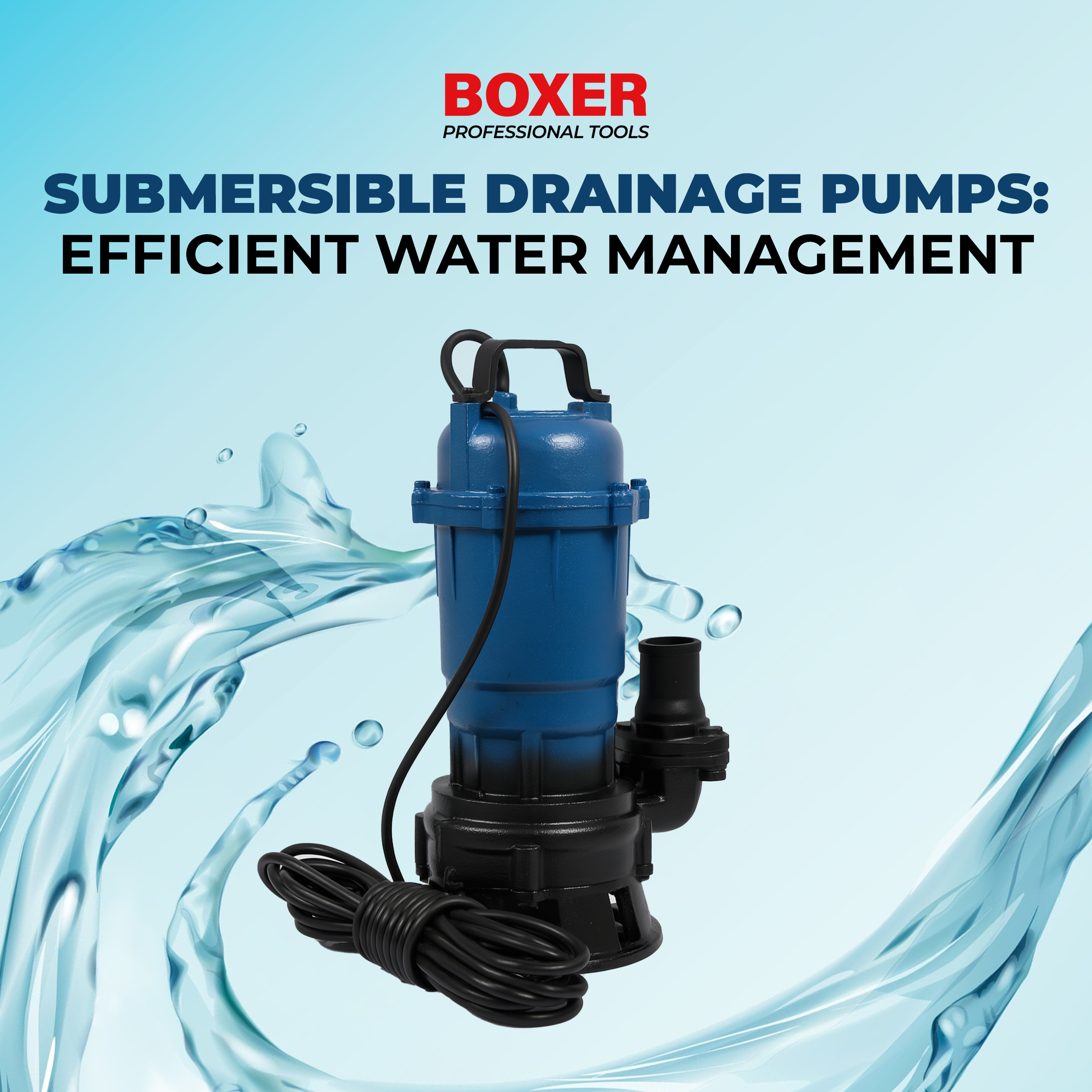
Submersible Drainage Pumps: Efficient Water Management
Effective water management is essential for homeowners, contractors, and building managers. Whether you're dealing with basement flooding, garden pond drainage, or industrial wastewater, a reliable pump is crucial. Submersible drainage pumps excel in efficiently and softly moving water due to their underwater motor design and automated control features. From how these devices operate to choosing the best model for your needs, we'll cover all the important points in this post. We'll also incorporate important SEO subkeywords like energy-efficient submersible pump, solids-handling submersible pump, portable submersible drainage pump, and more. Additionally, we'll highlight Boxer Tools' Champion CP‑5501 Submersible Drainage Water Pump, an exceptional choice for applications involving both clean and unclean water. By the end, you'll have a clear plan for choosing, installing, and maintaining a submersible pump that keeps your area dry and your business operating efficiently.
What Is a Submersible Drainage Pump?
An independent device that functions while completely immersed in the liquid it is pumping is a submersible drainage pump. Submersible pumps are safer and more dependable than conventional external pumps because of their sealed motor and impeller housing, which stop water incursion. Key characteristics include:
- Underwater Motor Design: Reduces suction head requirements and does away with priming.
- Float Switch Operation: Depending on the water level, the pump is automatically turned on or off.
- Compact, Portable Design: A lot of versions are suitable for use as portable submersible drainage pumps, which makes them simple to transport between locations.
These pumps are frequently referred to as submersible wastewater drainage pumps or filthy water pumps when designed for solids since they can handle both clear and turbid fluids. They are a popular choice for building sites, garden ponds, and basements in homes because of their adaptability.
How Submersible Pumps Work
It is simpler to identify issues and evaluate performance when one is aware of how a submersible pump operates within.
Impeller and Volute
- Water is forced outward by the centrifugal force created when the impeller rotates inside the volute housing.
- High‑flow submersible drainage pumps often feature multi‑vaned impellers to boost capacity.
Sealed Motor Assembly
- The centrifugal force produced when the impeller rotates inside the volute housing pushes water outward.
- This design helps to generate a quiet‑running profile for the pump since the surrounding liquid muffles the motor noise.
Float Switch Operation
- A built-in float switch senses changes in the water level and automatically starts or stops the pump.
- The automated on/off function of this submersible pump prevents dry-run damage and saves electricity.
Flow Rate and Head
- The pump's flow rate, which is measured in m³/h or GPM, indicates how much water it can move in an hour.
- Head, which is measured in meters or feet, is the maximum height at which the pump can raise water.
A submersible pump with the proper head and flow rate prevents motor overload and ensures efficient operation.
Important Attributes and Advantages
When evaluating a submersible drainage pump, look for these important features:
Solids‑Handling Capability
Perfect for uses where there may be small stones, leaves, or dirt. A solids‑handling submersible pump typically allows particle passage up to 20 mm or more.
Energy‑Efficient Design
Power consumption is decreased by modern motor and impeller designs. An energy-efficient submersible pump lowers electricity costs over time.
Quiet Operation
Quiet submersible pumps are suitable for homes and sensitive areas because of the underwater motor casing's ability to suppress noise.
Automatic On/Off Control
Float switches manage activation without manual intervention, protecting the pump from running dry.
High‑Flow Performance
Pumps rated for 10–20 m³/h or higher are considered high‑flow submersible drainage pumps, tackling large volumes in minimal time.
Durable Construction
Stainless steel or cast iron housings don't corrode easily. A stainless steel submersible pump offers a longer service life, especially in difficult or chemically charged fluids.
Portable & Lightweight
Compact models weigh under 20 kg and include carrying handles—key traits of a portable submersible drainage pump.
Types of Submersible Drainage Pumps
Understanding pump categories helps narrow down your options:
1. Clear‑Water vs. Dirty‑Water Pumps
- Clear‑water pumps excel at moving relatively clean liquids with minimal debris.
- Dirty‑water pumps or submersible sewage vs. drainage pump models handle sludge, leaves, and small solids.
2. Portable vs. Stationary
- For spot pumping, portable submersible drainage pumps frequently have lightweight bodies and built-in handles.
- For constant use in pits or sump pumps, stationary models are fastened into position.
3. Power Source Variations
- Mains-powered pumps (230 V AC) offer dependable performance at larger flow rates.
- Battery-operated submersible drainage pump options offer mobility in places without electricity.
- Submersible pump systems that run on solar power use renewable energy to manage water in an environmentally beneficial manner.
4. Material & Build
- Stainless steel submersible pumps can tolerate abrasive or acidic materials and are resistant to rust.
- Despite being lighter, plastic or composite housings may not be as temperature or chemical resistant.
5. Specialty Models
- Shredders or grinders are heavy-duty submersible pump variations that macerate particles before discharge.
- For indoor or noise-sensitive installations, quiet-running submersible pump lines concentrate on minimizing noise.
Common Applications
Submersible drainage pumps shine in a variety of scenarios:
- Flooding in Basements and Crawlspaces : When pipes burst or there is a lot of rain, a submersible pump for basement flooding keeps living areas dry.
- Drainage in Gardens, Ponds, and Fountains : Filling or draining water features without removing fish or disassembling filters.
- Dewatering of Construction Sites and Trenches : Groundwater in excavation pits must be quickly removed in order to preserve dry, safe working conditions.
- Flood Response in an Emergency : During storms and flash floods, first responders or homeowners use portable units.
- Municipal and Industrial Wastewater : In treatment facilities, submersible wastewater drainage pumps manage stormwater runoff and effluent.
Tips for Selecting the Best Submersible Drainage Pump
A number of technical considerations must be balanced when choosing your pump:
Flow Rate & Head Requirements
- Determine the desired pumping time and the total water volume (m³).
- Calculate the piping's friction losses (dynamic head) plus vertical lift (static head).
- Compare them to the performance curve of the pump.
Solids Handling Capability
- For debris‑laden fluids, choose a model rated for solids passage (e.g., 20 mm rotor passage).
Power Source & Efficiency
- Remote locations are best served by battery or solar pumps, whereas stationary installations are best served by mains-powered pumps (230 V).
- Compare motor power (kW or W) versus expected current draw to assess energy efficiency.
Automatic Control Features
- A reliable float switch operation prevents dry running and minimizes manual monitoring.
Construction Material & Durability
- Choose from plastic, cast iron, and stainless steel according to corrosion risk and chemical compatibility.
Portability & Mounting Options
- Look for carrying handles, quick‑disconnect hoses, and bracket mounts for ease of use.
Brand Reputation & Service
- Established names like Boxer Tools often provide warranties, local service centers, and readily available spare parts.
Installation Guide for Submersible Pumps
A proper setup ensures safety and peak performance:
1. Site Preparation
- Remove any debris from the water supply or sump.
- To avoid pump tilting, make sure the base is level and stable.
2. Electrical Attachments
- For mains-powered units, use an outlet protected by a GFCI.
- Observe local electrical codes as well as manufacturer wiring diagrams.
3. Hose & Discharge Configuration
- Choose kink-resistant, long-lasting hoses that are the same size as the discharge connector on the pump (e.g., 2″).
- To stop leaks and blow‑offs, secure clamps.
4. Float Switch Positioning
- Ensure the float can move freely without obstruction.
- Test the automatic on/off function before full operation.
5. Grounding and Bonding for Safety
- Make that the ground wire for the pump is connected appropriately.
- Electrical connections should be kept above anticipated flood levels.
Upkeep Advice for Longevity
Regular maintenance minimizes downtime and safeguards your investment:
- Frequent Examination : Examine the impeller housing, cables, and seals for damage or cracks.
- Cleaning and Removal of Debris : Periodically disassemble the pump to remove accumulated sediment and sludge.
- Checks for Lubrication and Seals : Follow the manual for seal replacement intervals, especially on dirty‑water pumps.
- Storage Guidelines : Dry and store in a frost‑free environment when not in use.
- Performance Testing : To ensure float switch dependability and smooth performance, run the pump in clean water once a month.
Solving Typical Problems
Even the best-quality pumps can have problems. Here's how to respond to them:
Pump Won’t Start
- Verify the power source and reset any outlets that have GFCI trips.
- Check for damage or obstructions on the float switch.
Reduced Flow or Head
- Remove any obstructions in the discharge hose or impeller housing.
- Make sure the pump isn't air-locked; tilt it a little to get rid of trapped air.
Excessive Vibration or Noise
- Tighten mounting bolts that are loose.
- Inspect impeller for damage or imbalance.
Overheating Motor
- Run only in water, never dry.
- Clean ventilation slots and ensure adequate submersion.
Leakage at Seals
- Replace O‑rings or mechanical seals per maintenance schedule.
Case Study: Boxer Tools Champion CP‑5501 Submersible Pump
Among Boxer Tools’ lineup, the Champion CP‑5501 Submersible Drainage Water Pump stands out for professional and home‑use alike. Designed to handle both clean and dirty water, it delivers:
- Power Supply: 230 V
- Power: 3,750 W
- Current Consumption: 3.5 A
- Max. Lift (Head): 28 m
- Max. Capacity: 20 m³/h
- Rotor Passage: 20 mm
- Connectors: 2″
- Dimensions (W/H): 26 × 40 cm
- Weight: 15 kg
Features & Benefits
- Dirty-Water Shredder: Solids are macerated for continuous pumping by the integrated cutter.
- Silent Operation: The underwater motor's design guarantees minimal noise, making it perfect for residential environments.
- Sturdy Construction: Sturdy housing withstands corrosion and impact.
- Automatic Float Switch: Offers dry-run protection and hands-free operation.
FAQs
Q1. How frequently should my submersible drainage pump be serviced?
A simple examination should be performed every three months, and the manufacturer may advise a complete teardown and seal replacement once a year.
Q2. Can my pump be run dry?
No. Without water, the motor may overheat and seals may be harmed. The float switch prevents dry running if positioned correctly.
Q3. What makes a drainage pump different from a sewage pump?
Drainage pumps handle water with little solids (up to roughly 20 mm), whereas sewer pumps are designed for heavy solids and require more robust grinders.
Q4. How do I calculate required flow rate and head?
Sum total vertical lift + friction losses in piping to get the head. Divide the total water volume by the intended pumping time to determine the flow rate.
Q5. Are batteries or solar-powered pumps as effective as mains-powered ones?
They offer flexibility off‑grid but typically have lower flow rates. The most powerful choice for high head or huge volumes is still a mains-powered machine, such as the Champion CP‑5501.
Submersible drainage pumps are crucial pieces of equipment for efficient water management in commercial, industrial, and residential settings. By understanding how they work, evaluating key features, such as energy efficiency or solids-handling capacity, and following the proper installation, maintenance, and troubleshooting protocols, you can ensure reliable, long-lasting performance. Due to its professional-grade performance, silent operation, and powerful power for heavy-duty applications, the Boxer Tools Champion CP‑5501 is a good choice for anyone searching for a high-flow, automatic on/off submersible pump. To keep spaces dry, safe, and usable, get the right pump right away.
Copyright © 2025 Boxertools | Powered By Orance Media Group


